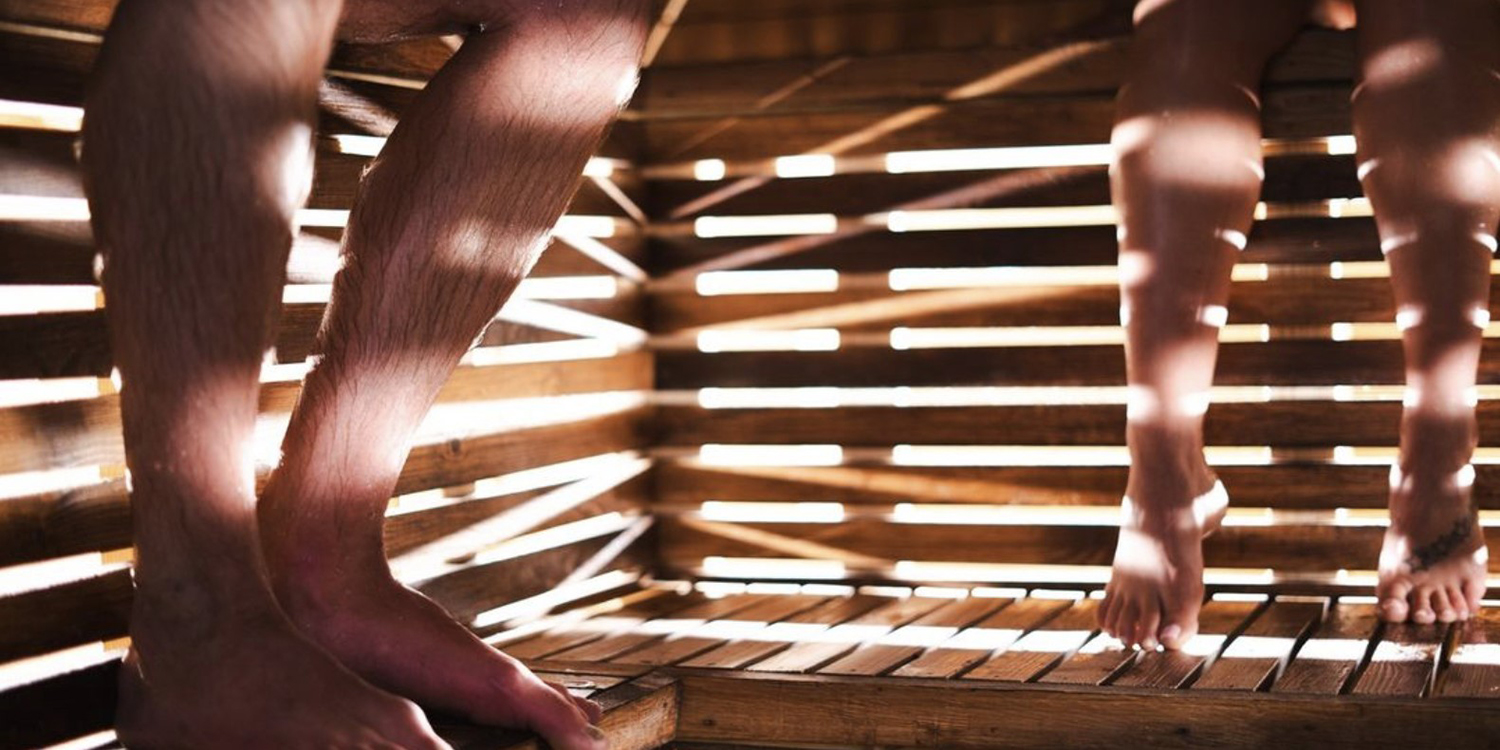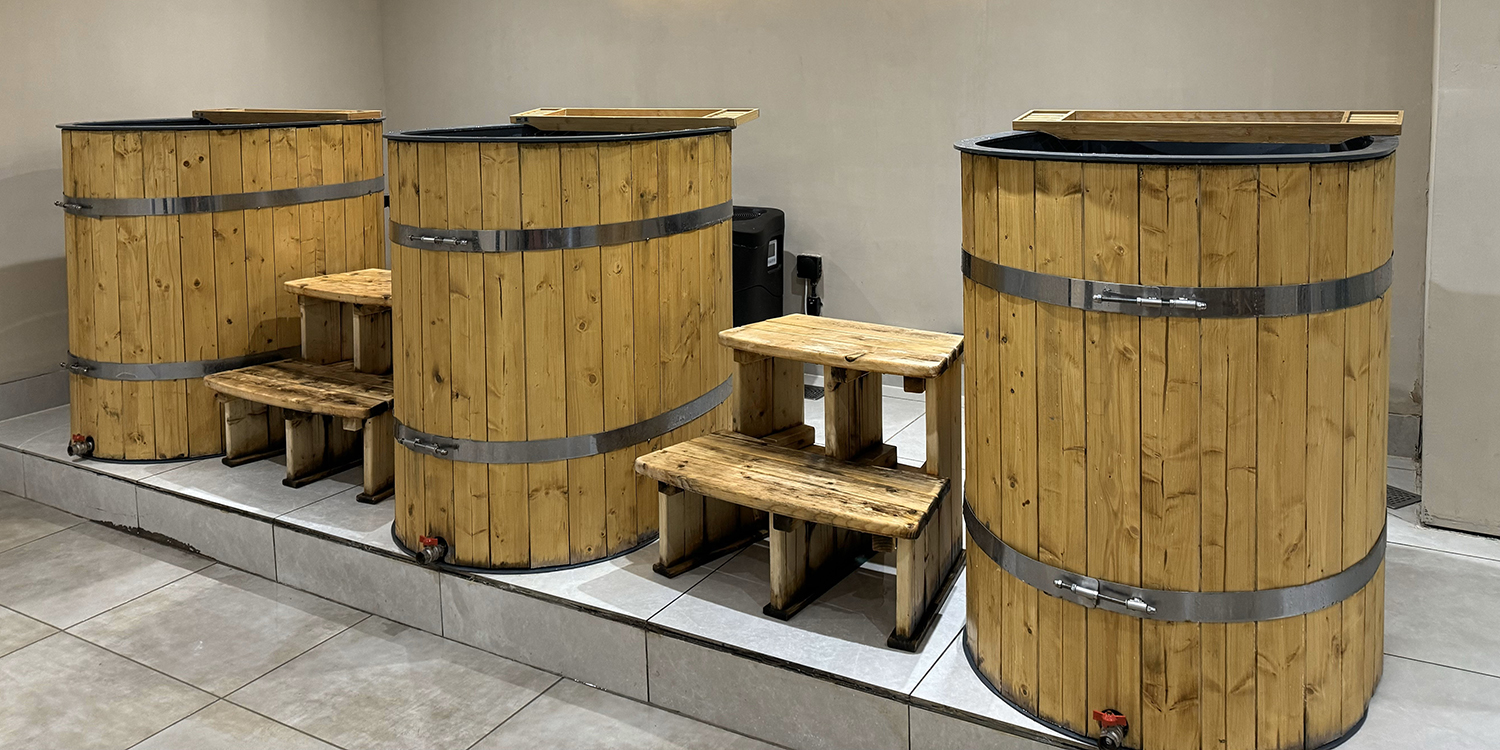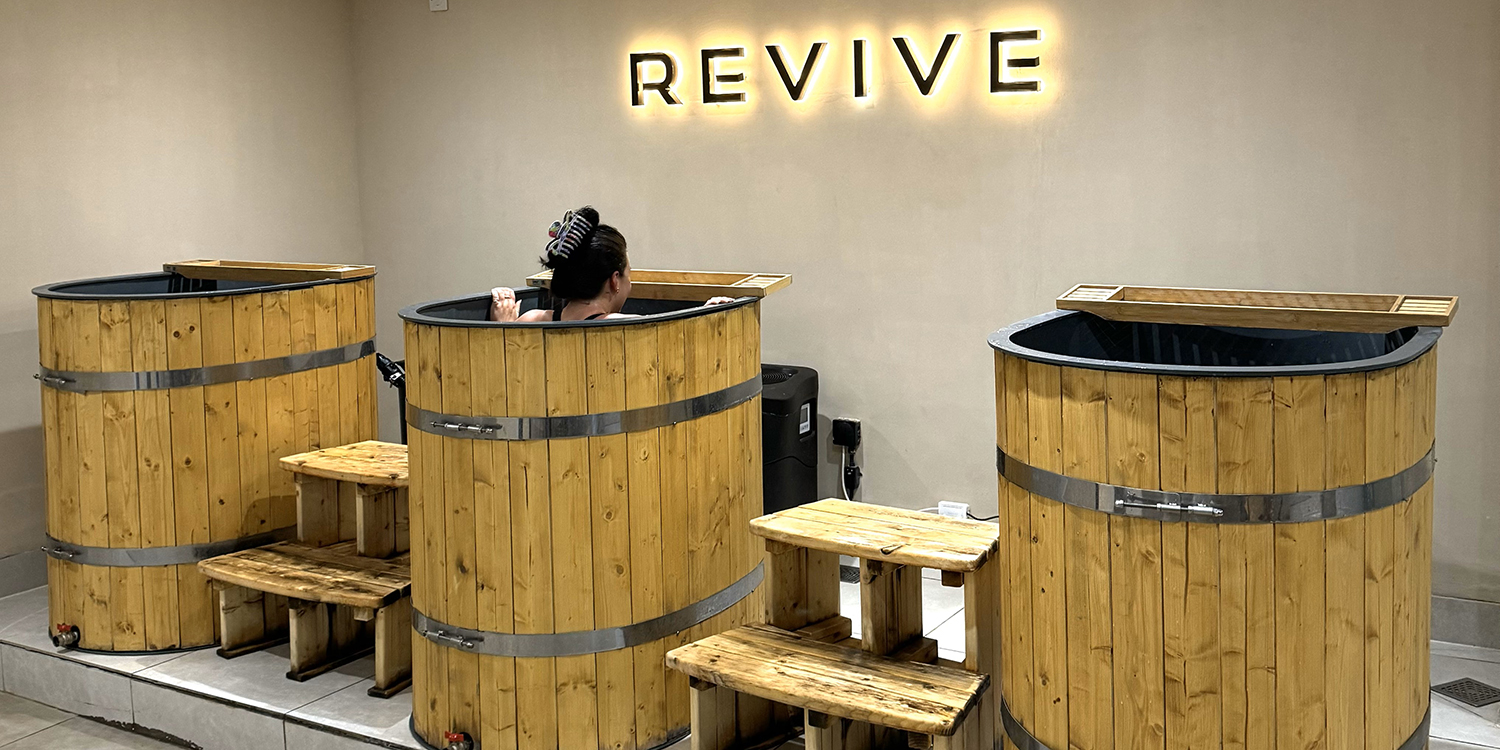You’ve seen athletes cold plunging before jumping in a sauna, but what benefits are they getting? Our audience editor Eve Davies finds out
With 8.3 million views under #contrasttherapy on TikTok, this recovery method – which involves alternating between a cold plunge pod and sauna – is having its moment, and after giving it a go I can see there’s a fair case for it.
Contrast therapy is gaining popularity in wellness spaces, professional sports recovery and among general fitness enthusiasts on social media. So it’s unsurprising to see more and more spas offering this treatment across the UK.
The thought of cold plunging might sound daunting, but getting into a toasty sauna straight after doesn’t make it seem so bad, and with this comes a wealth of physical and mental benefits from enhanced recovery to dopamine surges.
An alternative activity for a Saturday evening, I went to try contrast therapy at Revive Wellness Club in Skewen, Wales. This was during a particularly intense running week for me in which I was running 70 kilometres (10 kilometres a day) in the name of journalism, so I wanted to feel the so-called benefits for myself.

What is contrast therapy?
Contrast therapy involves a series of brief, repeated immersions in cold water and hot environments. It combines the use of ice baths and saunas, benefitting the body through, as the name suggests, the contrasting effect of heat and cold on muscles and organ systems.
Revive cite enhanced recovery, improved athletic performance, increased metabolic rate, stress relief, mood enhancement, and improved sleep, skin circulation and respiratory health as benefits of contrast therapy.
This type of therapy is said to help the body recover quicker and better, which was music to my ears after a heavy-feeling morning run. The ice bath reduces muscle soreness and inflammation, while the heat of the sauna promotes relaxation – bliss. The contrasting temperatures improve circulation as blood vessels dilate and speed up muscle recovery time, increasing physical resilience.
Revive staff explain how improved circulation helps deliver oxygen and nutrients to muscles, organs, and tissues, supporting overall cardiovascular health. It can help soothe aches and pains and promote healing.
Contrast therapy also helps manage stress by providing both soothing heat and invigorating cold sensations. The sauna relieves mental tension, while the ice bath stimulates the release of feel-good endorphins and can increase dopamine levels, according to Healthline. These happy hormones are known to uplift mood, increase motivation, reduce anxiety, and promote better quality sleep, improving overall well-being and mental resilience.

Revive yourself with contrast therapy
For £15 per person, you can spend an hour in the spa at Revive, cold plunging and relaxing in or out of the sauna.
For maximum benefits, Revive recommends carrying out the cold plunge to sauna cycle four times (anything more than this has no further benefit), starting in the ‘warmest’ tub and building up your time from 30 seconds.
There are three cold plunge tubs at Revive set at varying temperatures – six degrees Celsius, four degrees Celsius and two degrees Celsius. I began in the six-degre tub, lasting just under a minute before heading to the sauna. Ten minutes in the sauna had me warmed up and pouring with sweat.
Next round I went in the four-degree tub, lasting just over a minute this time. The tingling in my legs indicated that the cold water was doing its thing. I got out red-skinned, covered in goosebumps and shivering. Another eight minutes in the sauna, and then I was ready (after psyching myself up mentally – a nice change from the usual Saturday night psych up to take a tequila shot) to get in the two-degree tub, which in all honesty was horrific. That said, I could feel the blood pumping in my legs, which I took as a good sign of circulation. A strong 30 seconds later I was darting to spend a final few minutes in the sauna.
For my final cold plunge, I went for time over temperature and pushed through a full two minutes in the six-degree tub. Feeling brave (and giving up on keeping my hair dry) I even dunked my head before making a swift exit from the tub to acclimatise back to room temperature, as advised by Revive staff.
Did it work?
Immediately after the session, I felt relaxed and ready for a good night’s sleep. The following day my muscles, particularly in my legs, felt the benefit. This contrast therapy session came at the right time for me since I had been running a lot this week and my legs were feeling heavy after my Saturday morning long run. So, I was pleasantly surprised when I set out on a Sunday afternoon 10-kilometre run with fresh feeling legs and actually ran the fastest I had all week.
I can certainly see why professional athletes do it, for the mental and physical benefits. I can also see how it forces you to push yourself mentally, putting your body through discomfort for long-term gain.
Another takeaway: Don’t wear a claw clip in the sauna. It will melt in your hair.

